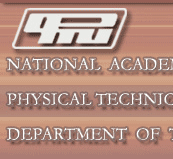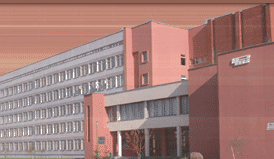|
Elements of the Process
Theory
With the method of
upper-limit estimate an optimal geometry of
rolled parts’ section at cross-wedge rolling is
determined. The geometry supplies minimum
energy of forming. An influence of deformational
metal strengthening on geometrical parameters of
a blank is
set.
Statistically
and cinematically correct fields of slide lines
are constructed numerically at cross-wedge
rolling of an endless cylinder with flat slabs
at a centered deformation field (with cogging
rate  >1.025). Strain and deformation
levels in a plastic field are determined. The
decisions take into account breaks of flow speed
at the boundaries of hard and plastic
areas. >1.025). Strain and deformation
levels in a plastic field are determined. The
decisions take into account breaks of flow speed
at the boundaries of hard and plastic
areas.
Statistically
correct fields of slide lines are constructed at
little cogging rates  <1.025 when deformations in the
cylinder section do not penetrate into the axis,
and a local field of deformational centre
realizes. A variant of proportional distribution
of strain at contact is
examined. <1.025 when deformations in the
cylinder section do not penetrate into the axis,
and a local field of deformational centre
realizes. A variant of proportional distribution
of strain at contact is
examined.
A new scheme of
deformed cylinder cross section geometry at
cross-wedge rolling of an endless cylinder by
three rollers is proposed. With the method of
upper-limit estimate genuine geometry of contact
and free surfaces for the proposed scheme is
determined with the help of consecutive
approximation of geometrical parameters of
cylindrical body section. Rolling efforts are
calculated; non-equiangular, statistically
correct slide lines fields are
constructed.
Cross
rolling of a tube is considered when width of a
tube side is insufficient and a plastic hinge
appears in Section B-B which causes tube
rigidity loss and rolling cessation. Minimal
tube width is determined with the method of
upper-limit estimate when plastic hinge appears
and contortion begins.
A
method of calculation of deformed metal cavity
revelation probability is developed.
Allocation of plasticity of initial materials
corresponds with Gauss’ law of normal
allocation.
Plasticity
resource is determined by an original
experimental method of cross-wedge rolling of a
flat disc which is cut out of a blank produced
with cross-wedge rolling. The method allows to
determine with high accuracy a part of material
plastic properties spent under certain
conditions of cross-wedge
rolling.
Models
of viscous metal destruction at plastic
deformation are considered, including
cross-wedge rolling. Metal and alloy deformation
represents a surface in position data of shear
enhancement ratio depending on the first
invariant of stress tensor and on cube root of
the third invariant of stress deviator. It is
shown that traditionally applied plasticity
diagram is a special case of a deformation
surface.
Modelling of the cross rolling process was carried out with the help of the method of finite elements using the packages of engineering analysis ANSYS and LS-DYNA.
Computer model of the process of cross rolling takes into account the multivariation of conditions and characteristics, depending on the boundary contact conditions, heating rate, blank material, which in their turn influence the strain state and energy-power parameters, that limit the stability of the process of cross rolling, including the opening of the axial cavity.
А multifactor model of cross-wedge rolling was created
The problems of regulating the spatial development of the process of plastic forming for different technological processes of cross-wedge rolling have been solved.
The worked out computer model allows to conduct the analysis taking into account different peculiarities of geometrical configuration of wedges, their dimensions, blank material and the regularities of their forming, without manufacturing the part itself.
Modelling allowed to raise the effectiveness of the process by using most fully the resource of plastic properties of metals and alloys.
| 


